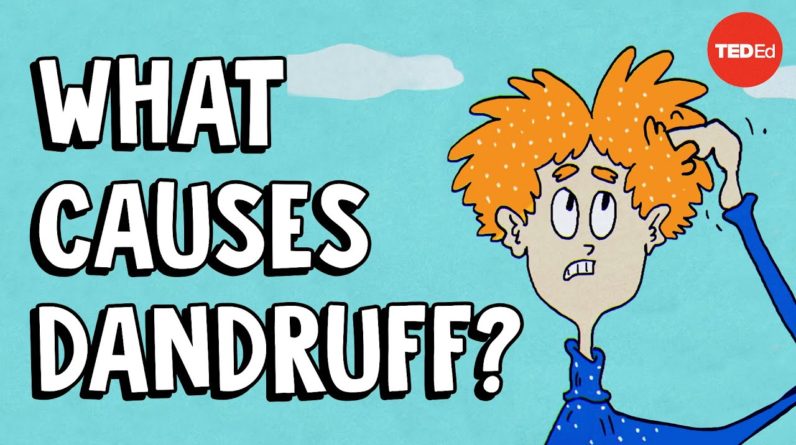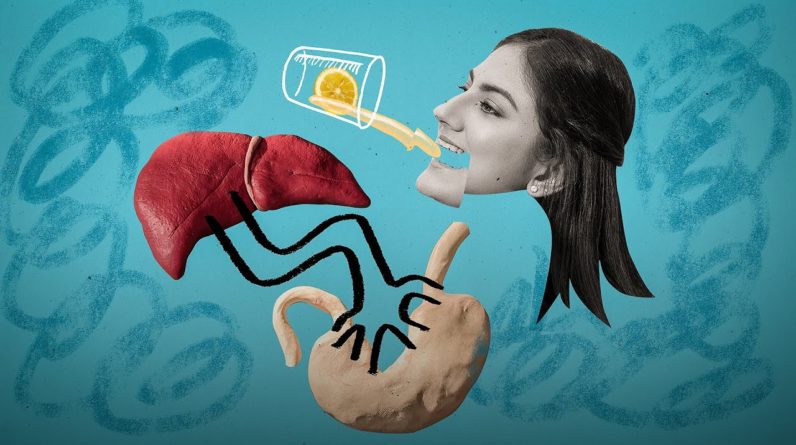
Here in this abundant forest, Malassezia is equipped with everything
it could ever need. Feasting constantly, it’s in paradise. But wait— what’s this? In fact, Malassezia is a type of yeast
that lives and dines on all of our scalps. And in about half of the human population,
its activity causes dandruff. So, why do some people have
more dandruff than others? And how can it be treated? We might consider ourselves individuals,
but we’re really colonies. Our skin hosts billions of microbes. Malassezia yeasts make themselves at home
on our skin shortly after we’re born.
Follicles, the tiny cavities that grow
hairs all over our body, make for especially popular
living quarters. Malassezia are fond of these hideouts
because they contain glands that secrete an oil called sebum that’s thought to lubricate
and strengthen our hair. Malassezia evolved to consume
our skin’s proteins and oils. And because of its many sebum-secreting
follicles, our scalp is one of the oiliest places
on our body— and consequently, one of the yeastiest. As these fungi feast on our scalp’s oils,
dandruff may form. This is because sebum is composed of both
saturated and unsaturated fatty acids. Saturated fats neatly pack together. Unsaturated fats, on the other hand, contain double bonds that create
an irregular kink in their structure.
Malassezia eat sebum by secreting
an enzyme that releases all of the oil’s
fatty acids. But they only consume the saturated fats,
leaving the unsaturated ones behind. These irregularly shaped leftovers
soak into the skin and pry its barrier open,
allowing water to escape. The body detects these breaches
and responds defensively, causing the inflammation
that gives dandruff it’s itch. It also makes the skin cells proliferate
to repair the damaged barrier.

Usually, our skin’s outer surface,
or epidermis, completely renews itself
every two to three weeks, Epidermal cells divide,
move outwards, die, and form the skin’s tough outer layer, which gradually sheds off in single cells
far too small to see. But with dandruff, cells churn out quickly
to correct the broken barrier, meaning they don’t mature
and differentiate properly. Instead, they form large, greasy clumps
around the hair follicle that are shed as visible flakes. This is how Malassezia’s
voracious appetite and our bodies reaction
to its by-products lead to dandruff. Currently, the most effective way to get
rid of dandruff is by using antifungals
in things like shampoos, applied directly to the scalp,
to kill Malassezia.
For those who experience dandruff, it usually comes and goes as sebum
secretions vary throughout one's lifetime due to hormonal changes. But despite the fact that Malassezia
colonize everyone to a similar extent, not everyone gets dandruff. Some people are more susceptible. Exactly why is unclear. Do people with dandruff have a certain
genetic predisposition? Is their skin barrier more permeable? Scientists are currently investigating
if people with dandruff do, in fact, lose more water through their scalps, and whether this is what’s leading
their skin cells to proliferate. Researchers are learning that Malassezia
communicate with our immune system using small, oily molecules called
oxylipins that regulate inflammation. If they can find a way to inhibit
inflammatory oxylipins and boost anti-inflammatory ones,
they could develop new treatments. Scientists are also investigating
if there’s any benefit to our relationship with Malassezia. They hypothesize that dandruff, which can be uncomfortable
and embarrassing for us, creates a reliable, oily
food source for the yeast. But dandruff isn’t contagious
or a great threat to our health. And Malassezia seem to excel
at defending their territory, our skin, from other, more harmful microbes
like Staphylococcus aureus.
So, while scientists have gotten
to the bottom of many mysteries surrounding this condition,
it must be said: dandruff remains a head-scratcher..







